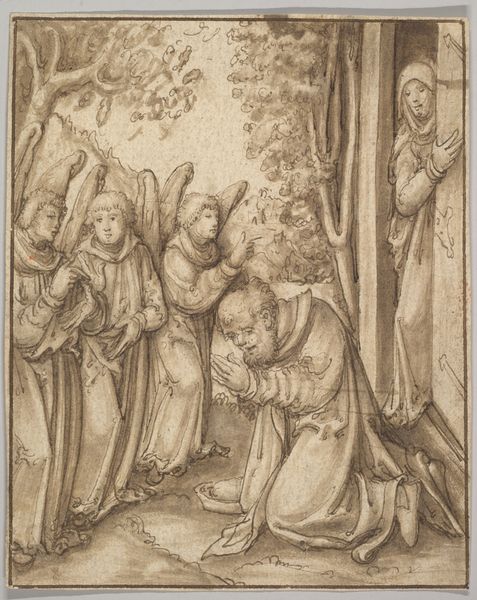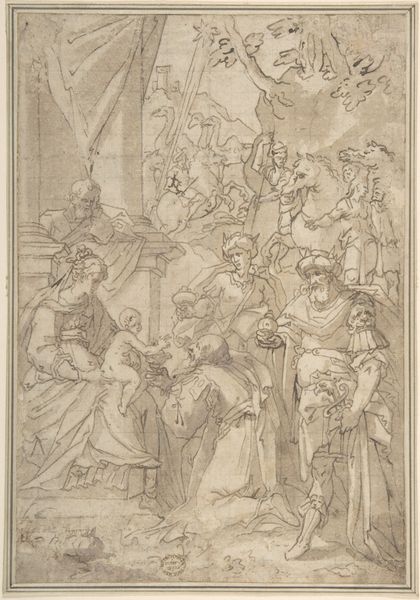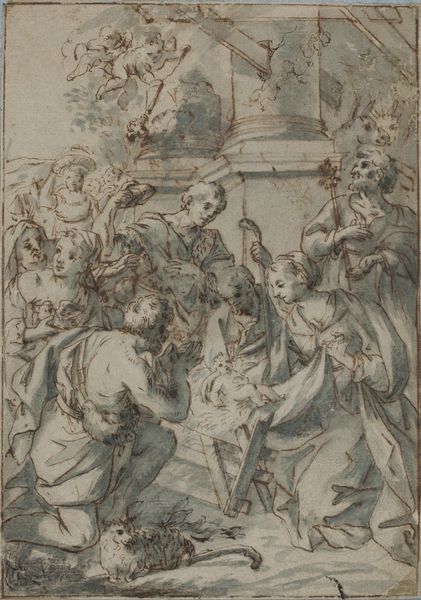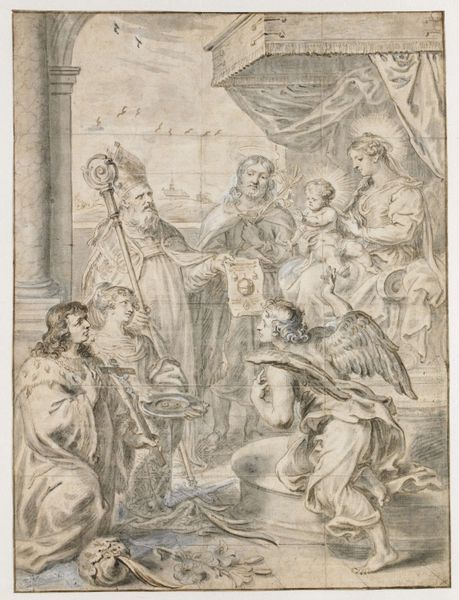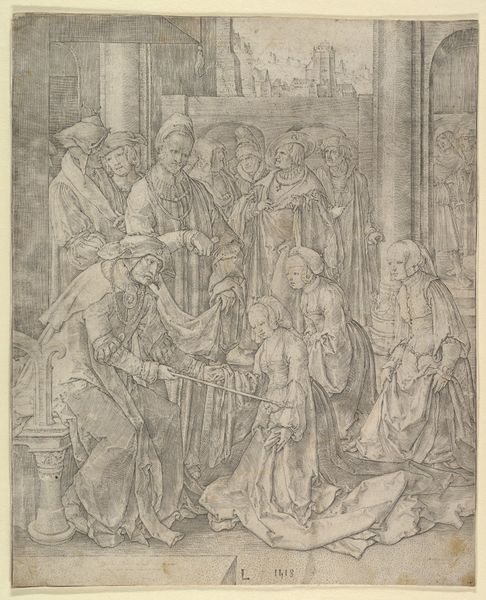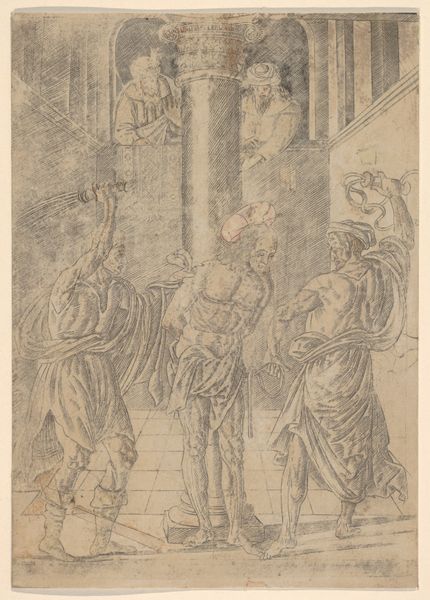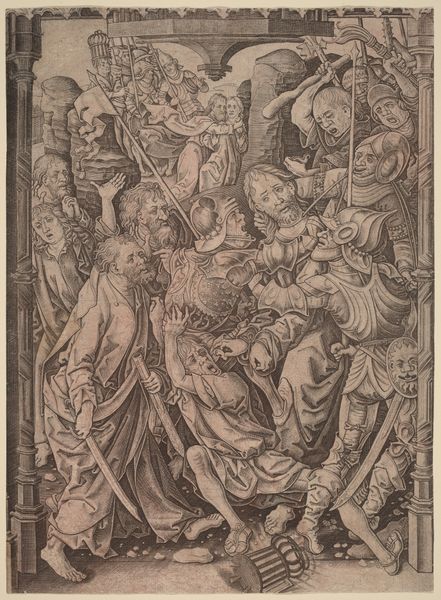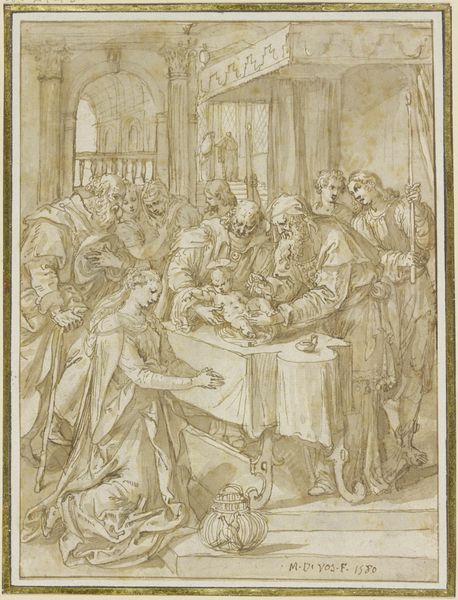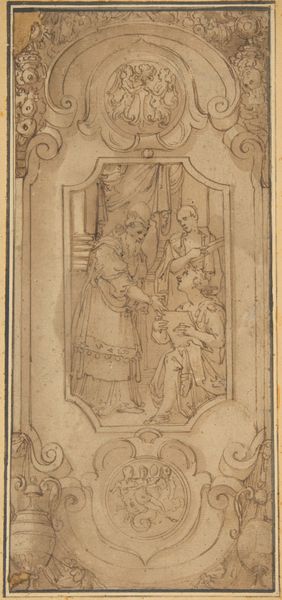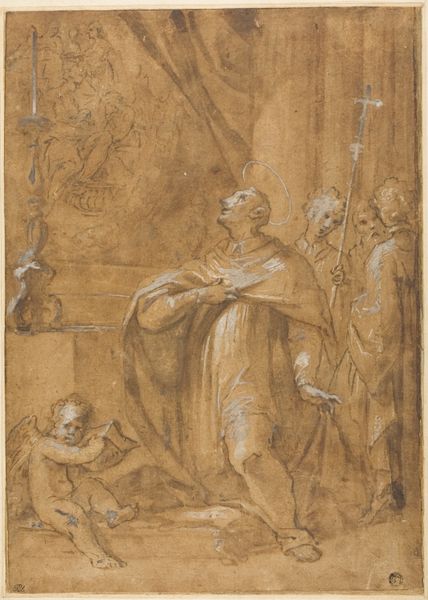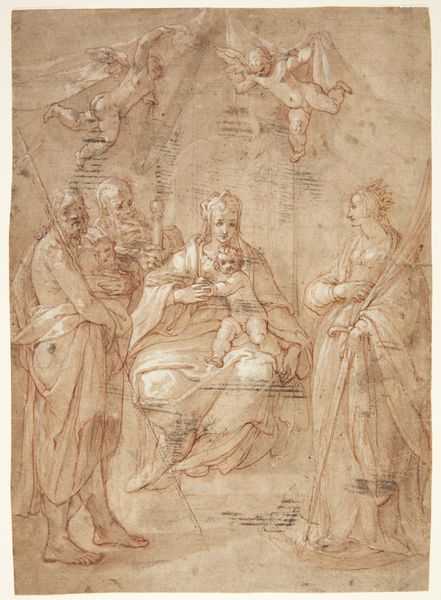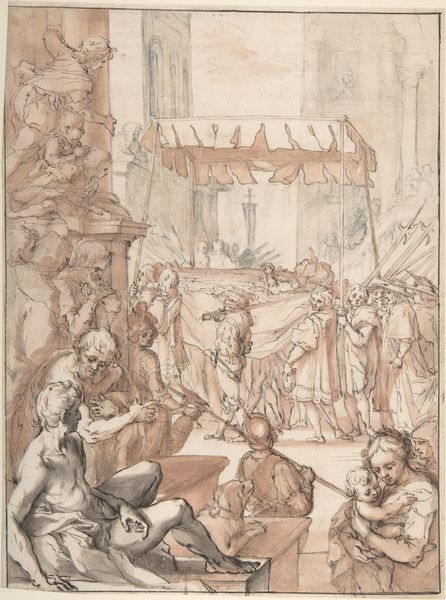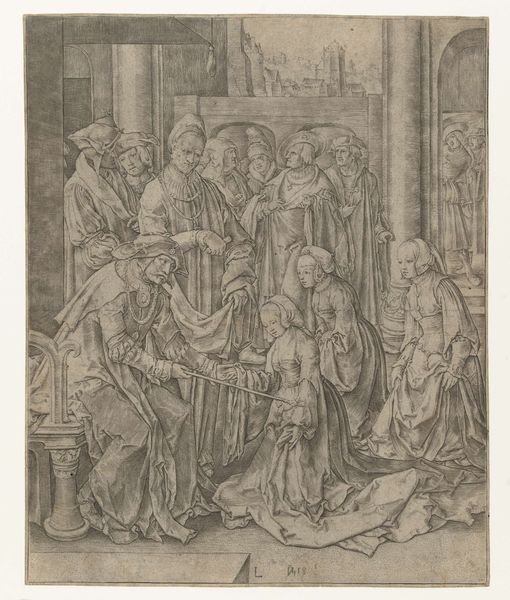
drawing, print, paper, ink
#
drawing
#
narrative-art
# print
#
figuration
#
paper
#
ink
#
history-painting
#
italian-renaissance
Dimensions: 11 11/16 x 9 1/16 in. (29.7 x 23 cm)
Copyright: Public Domain
Curator: Welcome! Here we have a drawing attributed to Frans Francken II, likely created sometime between 1595 and 1642. It is done in ink on paper, and depicts The Adoration of the Magi. It now resides here at The Metropolitan Museum of Art. Editor: There's a subdued solemnity about this drawing. The sepia ink gives it a warm, aged feel, and the composition, while crowded, directs our eyes right to the Virgin and Child. The kings present their gifts, and everything around them leads me to imagine opulence. Curator: The Adoration of the Magi was a popular theme, especially for wealthy patrons looking to showcase their piety and their connections to this grand historical narrative. Depictions like this reinforced the importance of the Church and the lineage of Christ. It also affirmed the idea of earthly rulers paying homage to a divine power, giving that ruler extra validity to lead in real life. Editor: Absolutely. Look at the Magi's attire! Their turbans, ornate robes, and the vessels they carry denote the exotic and luxurious, reinforcing that narrative of profound honor and the presence of foreign powers coming to see Christ. There's so much significance attached to the presentation of gifts: frankincense, myrrh, gold, which all represent Christ’s divinity, death, and royalty. Curator: Indeed. Francken and his contemporaries were quite strategic. Remember, these images weren't just aesthetic objects. They functioned as social and religious statements, subtly shaping beliefs and consolidating power. It served not only to portray religious belief but also to highlight worldly standing and the patronage the commissioner could wield. Editor: It’s interesting how Francken balances that worldly power against the pure, humble scene of the Nativity. Mary looks serene, almost unaware of the finery and regal presences before her. That juxtaposition, the earthly meeting the divine, truly makes this artwork powerful. Curator: Well said. The historical echoes, socio-political elements, and iconic imagery all intertwine here. Francken definitely succeeded in constructing a meaningful representation, both religious and political. Editor: Absolutely. Looking closely reminds us how symbols are never still, always reflecting our culture. And now it lives on for us.
Comments
No comments
Be the first to comment and join the conversation on the ultimate creative platform.
